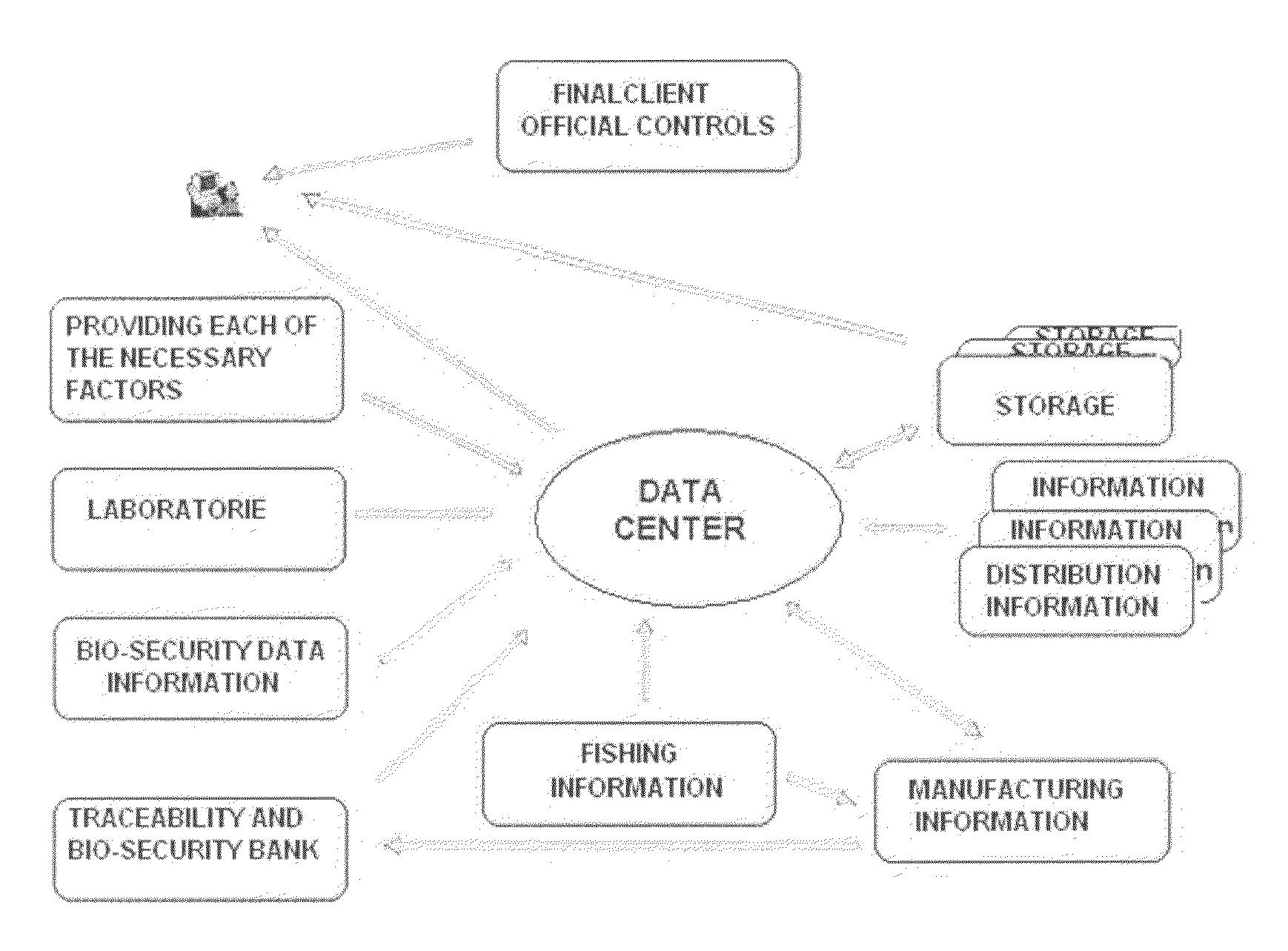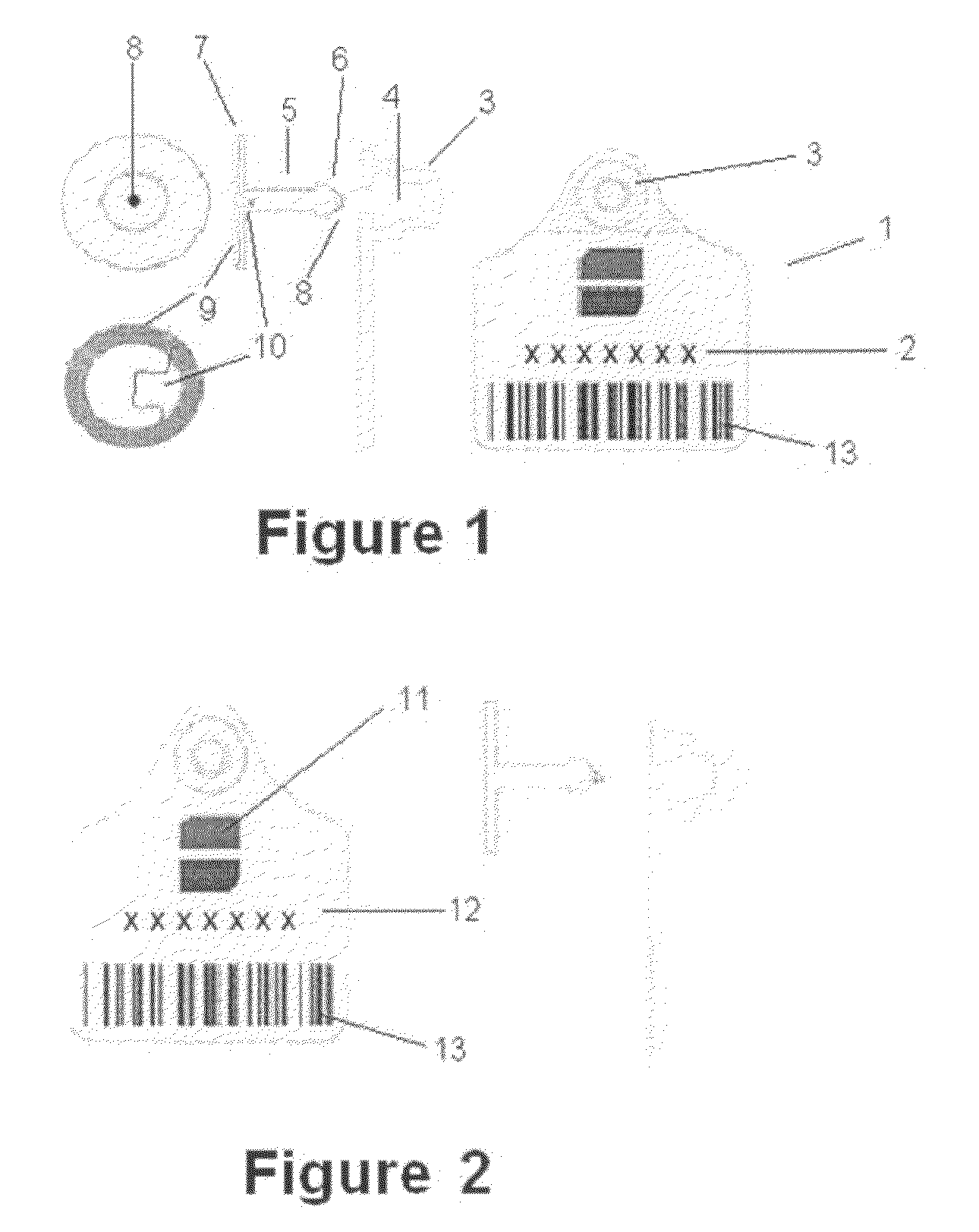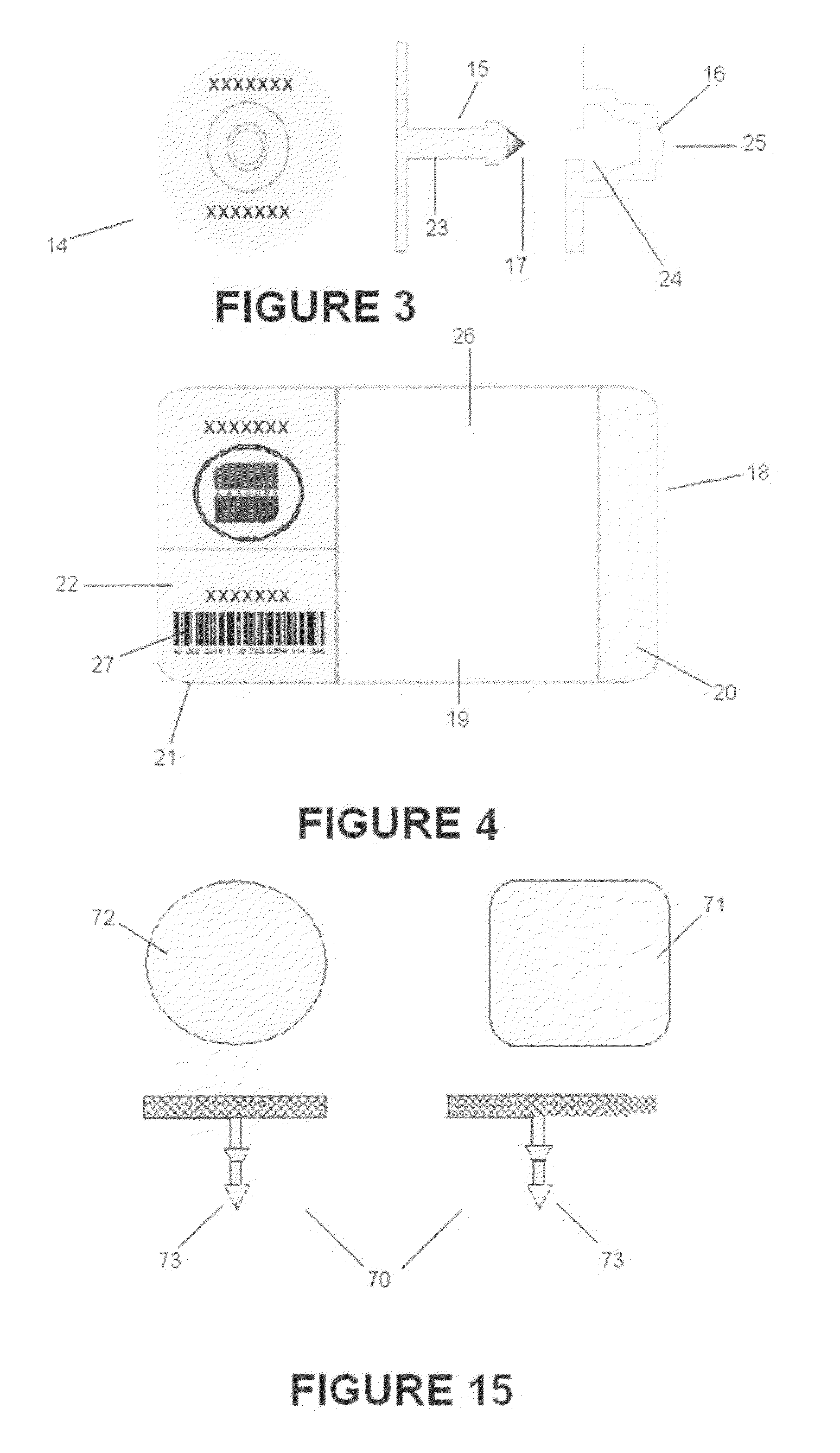Traceability process and security elements used in said process
a security element and process technology, applied in the field of traceability process, can solve the problems of unidirectional responsibility of processes applied up to now, no better contribution, etc., and achieve the effect of increasing the purchasing market, widening and varied production
- Summary
- Abstract
- Description
- Claims
- Application Information
AI Technical Summary
Benefits of technology
Problems solved by technology
Method used
Image
Examples
Embodiment Construction
[0082]The proposed traceability process, in the preferred embodiment, begins with the primary identification stage of cattle, a job that is carried out by means of electronic and optical input of data or only optical.
[0083]Identification is carried out by animal identification documents and birth certificates. The animal identification document consists in a special label or tag (1), that further to a barcode (13) and sequential alpha-numbering (2) can comprise an embodied iso-compatible chip. The barcode (13) and the chip (10) contain the same information, the difference is that the barcode is used “in situ” by the person involved at a determined moment of the traceability process, while the use of the chip is at a distance, using RFID technology (Radio Frequency Identification Devices) by which a micro-transponder (chip) embedded in an identification element (button, animal identification, implant or ruminal bolus capsule, etc.) is univocally associated to an object (vehicle in th...
PUM
 Login to View More
Login to View More Abstract
Description
Claims
Application Information
 Login to View More
Login to View More - R&D
- Intellectual Property
- Life Sciences
- Materials
- Tech Scout
- Unparalleled Data Quality
- Higher Quality Content
- 60% Fewer Hallucinations
Browse by: Latest US Patents, China's latest patents, Technical Efficacy Thesaurus, Application Domain, Technology Topic, Popular Technical Reports.
© 2025 PatSnap. All rights reserved.Legal|Privacy policy|Modern Slavery Act Transparency Statement|Sitemap|About US| Contact US: help@patsnap.com



